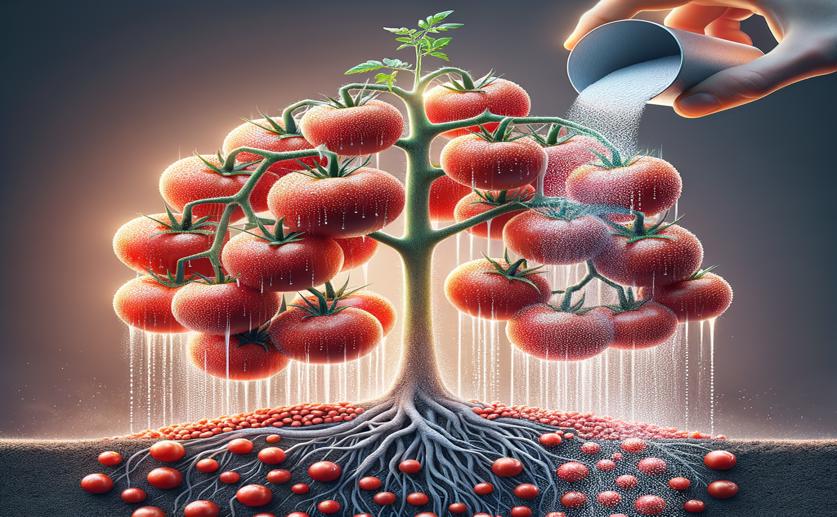
Tomato Yield and Water Efficiency Affected by Nitrogen and Irrigation Levels
Greg Howard
11th June, 2024

Image Source: Natural Science News, 2024
Key Findings
- The study was conducted in Efratana Gidim district, North Shewa, Amhara, Ethiopia, to find the best nitrogen and irrigation levels for tomato yield
- The highest tomato yield (35,903 kg/ha) was achieved with 125% ETc irrigation and 92 kg N/ha fertilizer
- The best water use efficiency (5.4 kg/m³) was recorded with 75% ETc irrigation and 46 kg N/ha fertilizer
- The combination of 125% ETc irrigation and 92 kg N/ha fertilizer provided the highest net benefit and economic return for farmers
AgricultureEnvironmentPlant Science
References
Main Study
1) Tomato yield, and water use efficiency as affected by nitrogen rate and irrigation regime in the central low lands of Ethiopia.
Published 10th June, 2024
https://doi.org/10.1038/s41598-024-62884-5
Related Studies
2) Current Progress in Nitrogen Fixing Plants and Microbiome Research.
3) Development of fertilizers for enhanced nitrogen use efficiency - Trends and perspectives.
4) The Global Dilemma of Soil Legacy Phosphorus and Its Improvement Strategies under Recent Changes in Agro-Ecosystem Sustainability.



 1st June, 2024 | Jenn Hoskins
1st June, 2024 | Jenn Hoskins